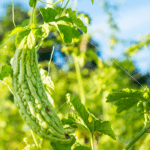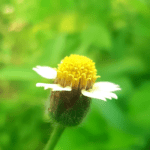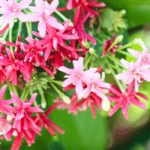The Mindful Gardener’s Guide to Repotting Adenium Plants: An Introduction
Adenium plants, also known as desert roses, are popular houseplants known for their unique appearance and stunning blooms. However, to ensure their continued health and growth, it’s important to know when and how to repot them. In this guide, we’ll explore the recommended time for repotting, the ideal soil mixture and additives, as well as the steps for successful pruning and transplanting. Let’s dive in!
Recommended Time for Repotting
Signs that it’s time to repot:
- Roots emerging from the drainage holes
- Slow growth and lack of blooms
- Wilting leaves despite adequate watering
- Mold or fungal growth on the soil surface
The best time of year to repot Adenium plants is in the spring or early summer, when the plant is entering its active growing season.
Soil Mixture for Adenium Plants
Shehri Kisaan’s Adenium Soil Mix is a popular and trusted option for Adenium plants in India. Our recipe includes a carefully curated combination of lava stones, filtered cinder, neem-rich compost, perlite, pumice chunks, charcoal chunks, bone meal powder, castor cake powder, coarse sand gravel, and leaf mould. Each ingredient serves a specific purpose in creating a well-draining and nutrient-rich soil mixture that promotes healthy growth and blooms.
The lava stones and filtered cinder provide excellent drainage and aeration for the roots, while the neem-rich compost acts as an organic fertilizer to prevent pests and diseases. Perlite, pumice chunks, and charcoal chunks all help with drainage and aeration, with perlite creating air pockets, pumice absorbing excess water, and charcoal absorbing toxins and impurities.
The bone meal powder and castor cake powder are slow-release fertilizers that provide essential nutrients for root growth and flowering, with bone meal powder being high in phosphorus and castor cake powder being high in nitrogen. Coarse sand gravel helps with drainage and aeration, while leaf mould adds nutrients to the soil and helps retain moisture.
Shehri Kisaan’s Adenium Soil Mix is not just a good option, it’s the best soil mix for Adenium plants. Our recipe has been tried and tested by many gardeners in India, and the results speak for themselves. With our carefully curated ingredients, you can rest assured that your Adenium plants will have the necessary nutrients and drainage for healthy growth and beautiful blooms.
In conclusion, Shehri Kisaan’s Adenium Soil Mix is the perfect solution for gardeners looking to provide the best care for their Adenium plants. Our recipe includes all the necessary ingredients to create a nutrient-rich and well-draining soil mix that promotes healthy growth and blooms. Trust in Shehri Kisaan’s expertise and give your Adenium plants the best soil they deserve.
Additives for Adenium Plants
Fertilizers:
Adenium plants benefit from regular fertilization during the growing season, using a balanced fertilizer with an NPK ratio of 19-19-19. Be sure to dilute the fertilizer to half strength and apply it every two weeks to 1 month.
Soil conditioners:
Adding soil conditioners such as compost or worm castings can improve soil structure and provide additional nutrients for the plant.
Beneficial microbes:
Inoculating the soil with beneficial microbes can promote healthy growth and prevent disease. You can purchase soil inoculants from your local garden center.
Other additives to consider:
- Epsom salt for magnesium and sulfur
- Shehri Kisaan Steamed Bone Meal Powder for phosphorus and Calcium
- Neem Khali for nitrogen
Don’t Kill Your Adenium: The Importance of Pruning and Transplanting Adenium Plants
How to prune Adenium plants:
- Use sharp, clean pruning shears to remove dead or diseased branches
- Prune back leggy growth to encourage branching and fuller growth
- Remove any crossing or crowded branches to improve air circulation
Steps for transplanting Adenium plants:
- Water the plant thoroughly the day before transplanting
- Gently remove the plant from its current pot, being careful not to damage the roots
- Remove any dead or damaged roots
- Place the plant in the center of the new pot, and add soil mixture around it
- Water the plant thoroughly, and allow it to drain before placing it in its new location
Tips for successful repotting:
- Use a pot that is one size larger than the current pot
- Don’t water the plant for the first few days after repotting to allow the roots to settle in
- Provide adequate light and humidity to help the plant adjust to its new environment
Conclusion
In conclusion, repotting Adenium plants is an important aspect of their care to ensure healthy growth and blooms. Remember to check for signs that it’s time to repot, use an ideal soil mixture with additives, and follow the steps for successful pruning and transplanting. Moreover, it is crucial to keep in mind that Adenium plants require well-draining soil to thrive, as they are prone to root rot if left in standing water for too long. Therefore, make sure to use a pot with drainage holes and avoid overwatering.
As with any plant care task, it is essential to be patient and gentle when repotting Adenium plants. Rushing the process or handling the plant too roughly can cause stress and harm to the plant, which can lead to stunted growth or even death. Take your time, follow the steps carefully, and your Adenium plant will thank you with healthy growth and vibrant blooms.
FAQs:
How often should I repot my Adenium plant?
It is recommended to repot Adenium plants every 1-2 years or when the roots have outgrown the current pot.
Can I use regular potting soil for my Adenium plant?
No, Adenium plants require a well-draining soil mix. Regular potting soil can retain too much moisture, which can lead to root rot.
What are some signs that my Adenium plant needs to be repotted?
Some signs include roots growing out of the drainage holes, slow or stunted growth, and the plant tipping over due to a too-small pot.
How do I prune my Adenium plant?
To prune your Adenium plant, use clean and sharp pruning shears to make cuts just above a leaf node or where you want the plant to branch out. Remove any dead or damaged branches, and avoid removing more than one-third of the plant at a time.







